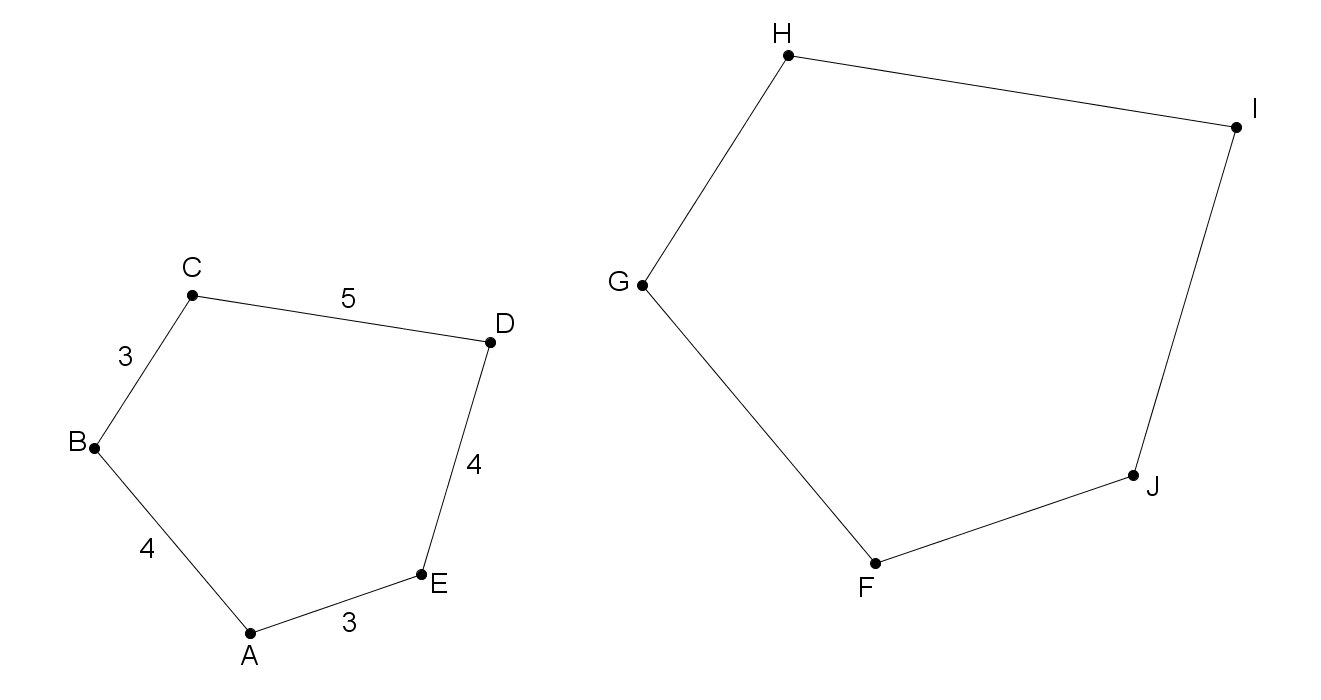How Many Sides For Similarity?

In the figure above, , , , , and .
You may set any side length in pentagon to be whatever value you want. Your goal is to make the pentagons similar .
What is the minimum number of sides needed in order for both pentagons to always be similar?
This section requires Javascript.
You are seeing this because something didn't load right. We suggest you, (a) try
refreshing the page, (b) enabling javascript if it is disabled on your browser and,
finally, (c)
loading the
non-javascript version of this page
. We're sorry about the hassle.
In order for the pentagons to be similar, all angles must be congruent and all sides must be proportional. The first requirement is already met in the problem description.
It is insufficient to prove that pentagons are similar if all corresponding angles are congruent. Below is a counterexample in which all corresponding angles are congruent, but not all sides are proportional:
Having one pair of sides be proportional is meaningless because it takes two pairs of sides to make a proportion. So far, we've eliminated the answer choices for 0 and 1 .
What if two adjacent sides in F G H I J are proportional to the corresponding sides in A B C D E ? Look below:
The pentagons are not similar. How about two non-adjacent sides? Look below:
These pentagons are not similar either. Therefore, two sides is insufficient.
Now we'll try three adjacent sides in F G H I J proportional to the corresponding sides in A B C D E .
This appears to work. To prove it, we'll divide the pentagons into triangles:
We can now prove that A B C D E ∼ F G H I J .
1) ∠ B ≅ ∠ G and A B F G = B C G H = 2 3 are given.
2) Δ A B C ∼ Δ F G H due to SAS similarity.
3) ∠ A C B ≅ ∠ F H G and A C F H = 2 3 because Δ A B C ∼ Δ F G H
4) ∠ B C D ≅ ∠ G H I is given.
5) ∠ A C D ≅ ∠ F H I because m ∠ B C D − m ∠ A C B = m ∠ G H I − m ∠ F H G
6) Δ A C D ∼ Δ F H I due to SAS similarity.
7) ∠ A D C ≅ ∠ F I H and A D F I = 2 3 because Δ A C D ∼ Δ F H I
8) ∠ C D E ≅ ∠ H I J and ∠ E ≅ ∠ J are given.
9) ∠ A D E ≅ ∠ F I J because m ∠ C D E − m ∠ A D C = m ∠ H I J − m ∠ F I H
10) Δ A D E ∼ Δ F I J due to AA similarity.
11) A E F J = D E I J = A D F I = 2 3 because Δ A D E ∼ Δ F I J .
12) A B C D E ∼ F G H I J because all angles are congruent and all sides are proportional.
I believe it is also possible to prove that three sides are sufficient even when one of the sides is not adjacent to the other two. I'll leave that for someone else to post!
Edit : It is not possible to prove. Simone provides a counter example, and I have a picture of that example below: